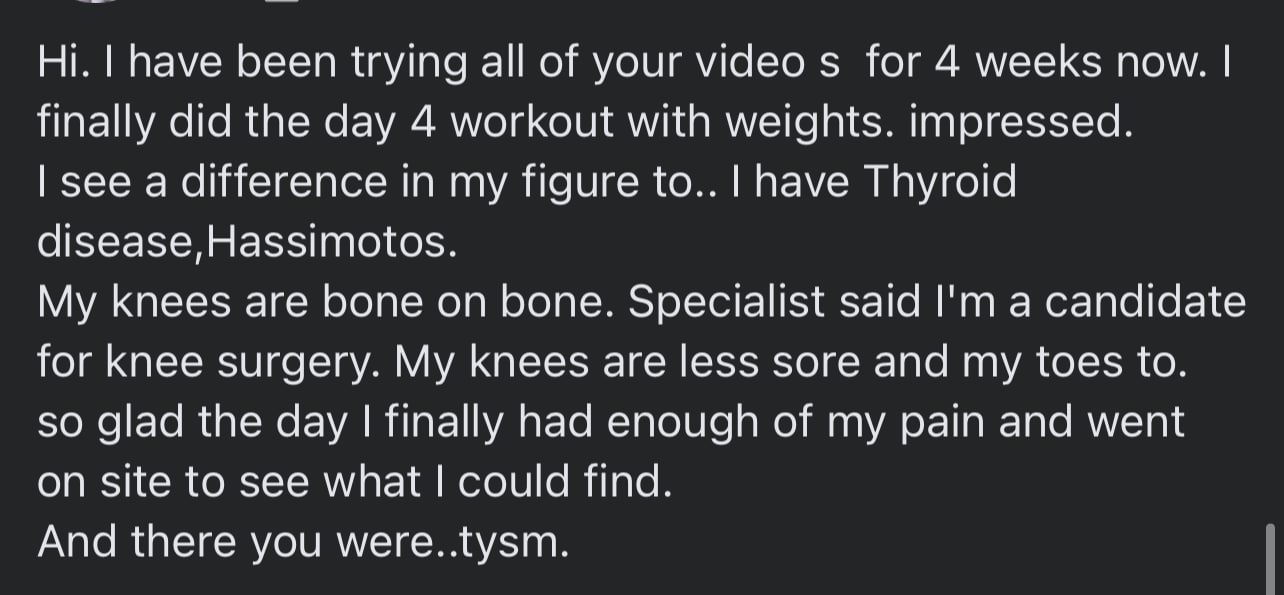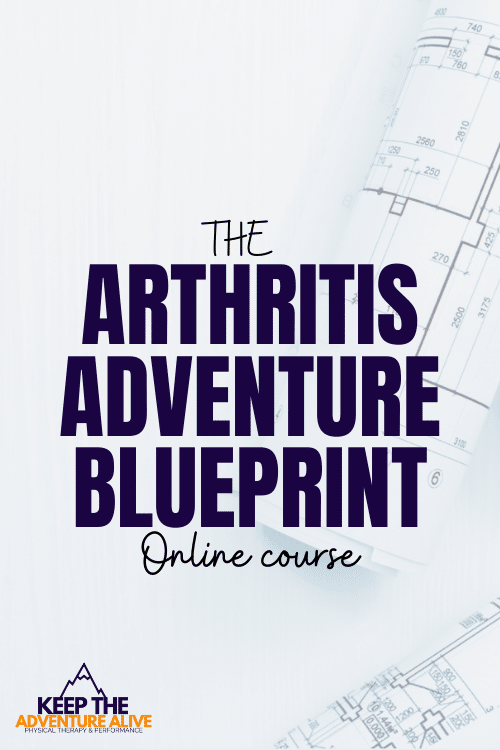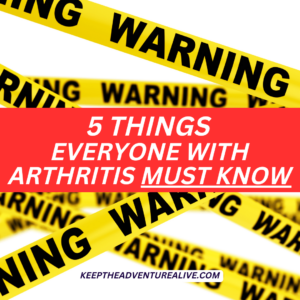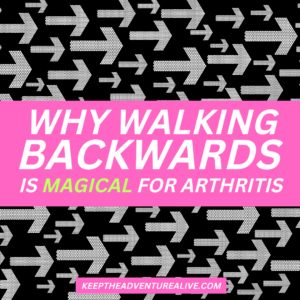Share on facebook
Facebook
Share on twitter
Twitter
Share on pinterest
Pinterest
Contrary to popular belief, jumping is actually very beneficial if you have mild osteoarthritis. Jumping exercises can slow down progression of knee osteoarthritis and osteoporosis when done correctly. According to the research, “the most important novel finding was that patellar cartilage quality can be improved with the kind of high-impact jumping exercise that has been shown to be beneficial for bone integrity. Importantly, this kind of impact exercise is well tolerated and, in addition, is not harmful to tibiofemoral cartilage” Jumping can improve bone density and improve the cartilage make up instead of hurting it. The most important thing is to make sure your body is ready to add jumping into your training! Let’s find out more.
Muscular weakness is common with osteoarthritis, particularly knee osteoarthritis. This is due to changing mechanics primarily due to joint pain.
Many times with an osteoarthritis diagnosis, physical activity levels decrease to adapt to the pain. With the muscle weakness that usually accompanies decreased activity, knee osteoarthritis can continue to get worse.
A systematic review found that with increased weakness to the knee extensors (thigh muscles), there is a 1.65 fold chance knee osteoarthritis symptoms will become worse.
You may already know that muscle strengthening is good for osteoarthritis. This is because it builds support around the joint and promotes evenly distributed pressure in the joint. The muscles also help to absorb some of the shock.
With muscular weakness, your joint will take more of the stress, more than it is prepared for, thus can lead to pain. You can learn more about the benefits of exercise here.
Why jumping?
Jumping is one way to build not only muscular strength but muscular power which is strength + speed.
Muscular power is extremely important for daily activities like stair climbing, climbing hills, running, and even walking. The more power your legs have, the more efficient they are at doing just daily activities.
Jumping also increases bone density, particularly in the hip which can help to prevent hip fractures later in life.
Research has shown that decreased muscular leg power is inversely related to knee osteoarthritis symptoms. This means on average, the less leg power, the further progression of osteoarthritis. So, the more muscular power, the better your osteoarthritis symptoms such as pain and instability could be!
Research has also shown with general aging, we begin to lose muscular power. With less muscular power, our muscles are not as efficient as they once were and this can then contribute to joint pain and osteoarthritis. This loss of muscular power can be attenuated with high intensity exercises such as jumping.
With decreasing power, even daily life activities could become very difficult to complete.
Another study found that muscular power is a significant determinant of knee pain and quality of life. This research has also found that more muscular power can significantly improve your walking ability, ability to go up and down stairs, and squatting.
High intensity exercises like jumping can be one way to build stronger legs but is jumping safe for osteoarthritis?!
If you are able to master jumping with osteoarthritis this could be indicative of the ability to keep adventures alive that include skiing, hiking, biking, and running! You don’t have to automatically give these things up!
Read on to see the further benefits.
Is Jumping Safe for Osteoarthritis?
Contrary to popular belief, it can be possible to participate in higher intensity training if you have osteoarthritis.
There have been various studies looking at the feasibility and effectiveness of high intensity activities such as jump training with those with mild osteoarthritis.
One in particular, looked at women with menopause who were exhibiting symptoms of knee osteoarthritis. They completed a high intensity exercise plan that increased in intensity 3 times per week.
“Our exercise program had positive effects on patellar cartilage quality, that is, on the structural properties of the collagenous fiber architecture and water content…in postmenopausal women with mild tibiofemoral and patellofemoral OA. Thus, these results highlight the importance of physical activity for knee cartilage characteristics.”
Effects of Exercise on Patellar Cartilage in Women with Mild Knee Osteoarthritis
In this same study, out of the 80 participants, there were only 6 participants that experienced joint pain and there were no adverse effects over the 12 month program. We have muscular power to gain, without any negative changes to the cartilage!
It is important to note that jumping has been studied primarily with patients with knee osteoarthritis but can be applicable across other joints.
It is also important to note that it is plausible in most mild stages of osteoarthritis, stages 1 and 2, but may not be in more severe cases. You can learn more about the 5 stages of osteoarthritis in this post.
So is jumping safe for osteoarthritis?
In most mild cases, the answer is likely yes. There are lots of things to consider though before you go pick up that jump rope! Muscular power is extremely important but we need to make sure we have a few things in order before we start adding it to training.
What to consider before jumping
Jumping is possible, but it is important to take into consideration making sure your body is ready for it. These are some things to make sure you are able to do before adding jumping into your training. You will want to make sure you have a well-designed program from a trusted health professional to make sure you are adequately prepared. Here are a few things to make sure you can master first:
- adequate lower body strength (i.e being able to squat without pain or support)
- the ability to stand on one foot for at least 30 seconds
- the ability to walk for at least 1 mile without significant increase in pain
Remember, these are just a few guidelines that we consider before adding in jump training. If we add it in too early, you could experience more pain. If your body is ready, you could experience decreased pain, increased ability to do the things you love, and improved quality of life!
Preparation for jump training
In order to prepare yourself to add jumping to your training, there are a few movements you should master first. It is important to make sure you can master these with control and without exacerbation of pain. Once you are able to complete these 3 exercises confidently for at least 3-4 weeks, then you can look into beginning to add jump training into your sessions!
As mentioned previously, it is very important to seek out personalized assistance in order to get the best results as these are general recommendations.
Let’s look further into these next 3 exercises.
1. Single Leg Supported Squat
Single leg strength is critical for your legs to adequately handle the stress needed for higher impact exercise.
The modified single leg squat is a great way to see where you stack up on your single leg strength. Take notice is one side is more difficult than the other.
Not only is it important to have the appropriate strength to complete the exercise without pain but also to complete this exercise with the correct form.
It is vital to be as symmetrical as possible to prevent compensations. When completing higher impact exercises, compensations can lead to joint pains, predispose you to other injuries, and/or make them very hard to do.
The goal is to be able to complete at least 10 reps on each side without losing your balance or needing support!
2. Front foot elevated lunge
This is a lunge modification that usually feels good despite osteoarthritis. When considering is jumping good for osteoarthritis- this exercise can be very useful.
Again, this exercise is focusing on single leg strength like the one above. The goal with this one is to bend both knees and then focus on straightening the front leg.
Complete 8-10 reps on each side and make sure it is without any significant pain and/or swelling during or afterwards before continuing. Make this exercise more difficult by increasing the depth of the bend.
3. Kettlebell Swings
Kettlebell swings are a great test for working the muscles that are necessary for jump training.
In order to jump you have to be able to create strength quickly like we talked about earlier. This movement adds in a speed component that is important to test.
This exercise is a HIP dominant exercise so make sure you squeeze your glutes to bring the weight forward instead of pulling with your arms.
Here is an article I did for Kettlebell Kings that goes into the kettlebell swing into more depth.
This is my favorite kettlebell as they are pretty affordable and have lots of other uses besides this exercise! I have even included it in the list of the TOP Arthritis Friendly Workout Equipment.
The goal is to complete 8-15 reps, starting with a light weight to make sure you have correct form first.
How often should you be jumping?
For jump training to be safe for osteoarthritis, we have to avoid doing too much, just like any other exercise. There is a sweet spot that is a little different for everyone depending on the severity of the osteoarthritis.
The idea is to begin to gradually incorporate various jumping exercises, aside from just jumping up and down. If you begin with <20 reps total on one occasion to start, this will be a safe way to understand how your body responds. This can continue twice per week if you don’t notice increase in pain or swelling afterwards.
The goal is to work up to 50-75 jumps per week split up over 3 days as long as you have no adverse reactions. Ideally, you would then alternate jump training every other week.
The best way to start incorporating jump training is to do it with support so your body is able to get used to the movements. The patients we have worked with have said that the TRX bands are much more doable and a lot less scary to start!
Here are some examples of different jumps you can do. Most of them are with support using these TRX bands which I highly recommend to start out with.
- TRX Double jumps: Youtube video
- TRX Single leg jumps: YouTube video
- Lateral hops with control: YouTube video
- Lateral hops unsupported: YouTube video
- TRX high knees: YouTube video
Conclusion
So is jumping safe for osteoarthritis? The answer is yes, you don’t necessarily have to rule out higher level impact activities with an osteoarthritis diagnosis. This is with the consideration of mild osteoarthritis, particularly stages 1 and 2.
Jumping is an effective way to improve muscular power which is correlated with less joint pain and higher quality of life.
Without adding higher impact training, you risk losing muscular power which can make daily activities hard to complete in the future.
Keep in mind, each person’s experience with osteoarthritis is different.
It’s important to listen to your body when you are preparing yourself to begin jump training. Making sure you are aware of how your body is recovering and leaving enough time between the next training session is important.
The goal is to work up to 50-75 jumps per week spread out over 3 sessions. Then alternate jump training every other week or even every 2 weeks depending on how you feel.
Now that you know power training may be appropriate for you and your joint pain, the next step is to find ways to make jumping possible!
I HIGHLY RECOMMEND starting with the Free 4 Day Arthritis Friendly Workout Challenge. You will receive 4 follow along workouts to show you safe and effective moves for your joints.


Click here to sign up for the 4 day challenge!
Disclaimer: This post is for general informational purposes only. It should not be used to self-diagnose and it is not a substitute for a medical exam, cure, treatment, diagnosis, and prescription or recommendation. It does not create a doctor-patient relationship between Dr. Kuhn and you. You should not make any change in your health regimen or diet before first consulting a physician and obtaining a medical exam, diagnosis, and recommendation. Move Well Age Well, LLC and Dr. Alyssa Kuhn, PT, DPT are not liable or responsible for any advice, course of treatment, diagnosis or any conclusions drawn, services or product you obtain through this video or site.
This article contains affiliate links that offer us a small commission without any cost to you.

The Arthritis Adventure Blueprint
Dr. Alyssa Kuhn’s signature program to help you go from hopeless to hopeful with osteoarthritis. You will learn the secrets to arthritis pain relief that actually work- including exercise, diet, and other ways to control inflammation! Say goodbye to short term pain relief, it’s time to make it last.




